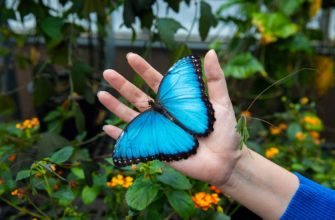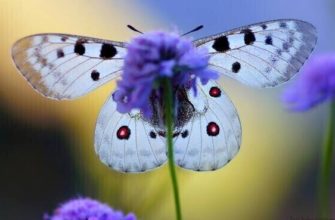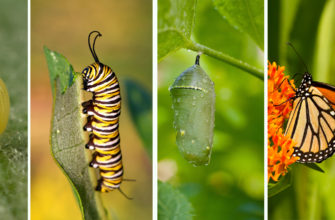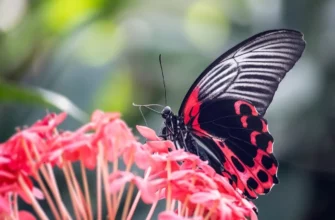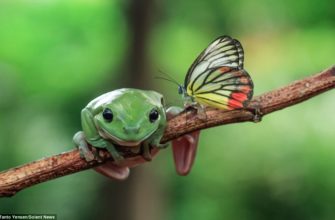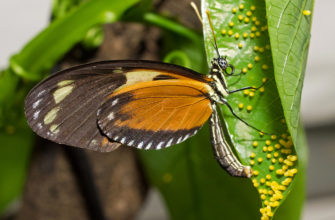Dianthus, also known as sweet williams or pinks, are flowering plants with over 300 species in the Caryophyllaceae family. These hardy perennials are commonly cultivated for their fragrant and showy blooms that come in shades of pink, red, white and purple. Dianthus plants have thin grass-like leaves and produce clusters of flowers with serrated edges on tall stems. They bloom in late spring to early summer and can continue to flower throughout the season.
Dianthus is known to attract several pollinators such as bees, butterflies and moths due to their nectar-rich flowers. It is believed that the bright colors of dianthus attract butterflies. The nectar produced by these flowers is an important food source for adult butterflies during their short lifespan. Moreover, some species of dianthus possess appealing fragrances that attract various insects including wasps and beetles.
It’s worth noting that dianthus has cultural significance too. In medieval times, dianthus was used as a symbol of love due to its sweet smell and beauty. According to a legend, a knight named William fell in love with his beloved while picking Dianthus flowers for her from a neighboring garden.
Nothing says ‘welcome’ to a butterfly quite like a dianthus flower – the ultimate destination for social butterflies everywhere!
The types of dianthus that attract butterflies

In the world of gardening, dianthus is a popular choice due to their attractive and long-lasting blooms. But, if you are looking to attract butterflies to your garden, you might be wondering which types of dianthus are the most effective. Here are some insights to help you out.
- Firstly, the Sweet William dianthus variety is a favorite among butterflies due to its highly fragrant blooms. They are especially attracted to the red and pink varieties.
- The Maiden Pink dianthus variety is another type that butterflies find irresistible. Its bright and showy blooms in shades of pink, white, and red attract butterflies in droves.
- The Cluster Headed dianthus is another butterfly magnet due to its fragrant sweet scent and colorful blooms in shades of pink, red, white, and lavender.
It is important to note that these varieties are not the only ones that can attract butterflies, but they are among the most effective. Additionally, planting these dianthus varieties in partial shade can help extend their blooms and attract more butterflies.
If you want to ensure your garden is a haven for butterflies, try incorporating these dianthus varieties into your landscaping. Your efforts will pay off as you watch these stunning insects flutter and feed among your flowers.
Don’t miss out on the joy of watching butterflies in your garden. Give these dianthus varieties a try, and create a beautiful and vibrant space that attracts these lovely creatures.
Flutter your way through these dianthus varieties and watch the butterflies do the same!
Dianthus varieties that attract butterflies
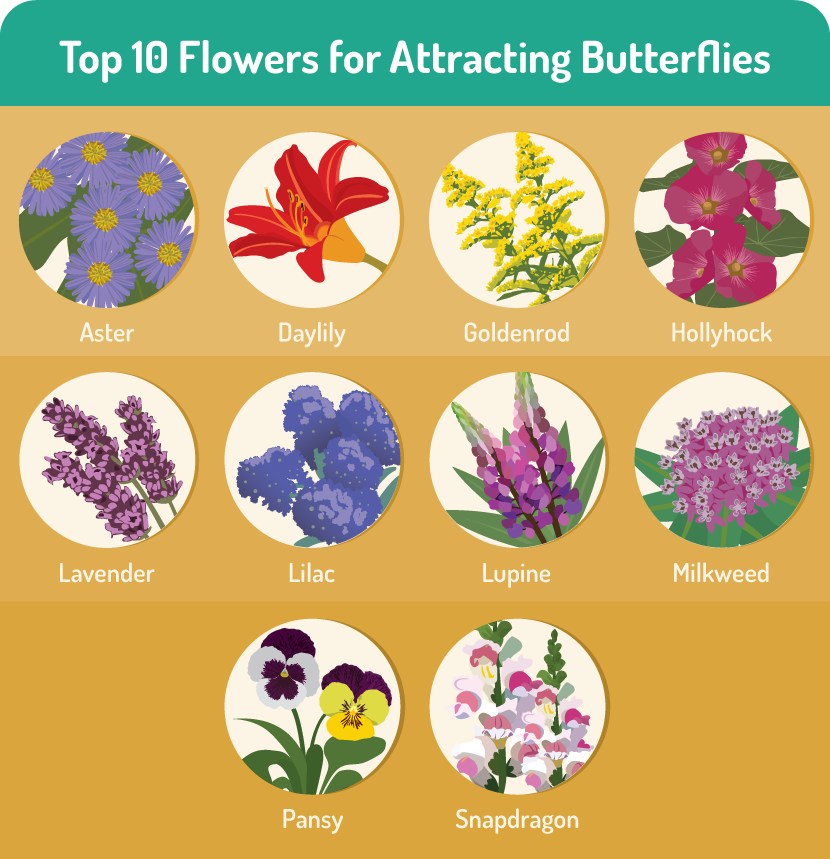
Dianthus Flowers that Allure Butterflies
If you want to add a natural touch to your garden, planting dianthus flowers are great. Aside from having different colors and varieties, some species attract butterflies, adding more beauty to your landscape.
Here are three types of dianthus that can lure those fluttering creatures with their fragrance and nectar:
- Sweet William: This beautiful plant is also known for its sweet perfume scent. It has clusters of tiny blossoms that come in white, pink or red hues.
- Clove Pink: A fragrant flower having delicate petals in bright colors like pink, purple, red or yellow. They grow in winter and last until early spring.
- Heddewig’s Dianthus: Commonly called “black and white,” these flowers have vivid crimson petals with a vibrant dark center. It blooms deliciously-scented nectar-rich blossoms in summer.
These amazing varieties also offer medicinal properties linked to inflammation reduction and anti-arthritic effects.
Butterflies love sunny spots where they can bask in the sun while sipping on flower nectar. Planting these three dianthus varieties will give them a perfect spot while giving your garden an irresistible beauty.
Did you know that monarch butterflies specifically require milkweed to lay their eggs? By planting indigenous milkweeds within your garden along with the above dianthuses varieties may obtain the complete butterfly growth cycle experience! Who said butterflies only like flowers in pastel hues? These dianthus types prove that a bold splash of color can still be a butterfly magnet.
Colors of dianthus that attract butterflies
Dianthus Variety for Attracting Butterflies
Dianthus is a favored plant amongst butterfly enthusiasts, but not all varieties will lure these fickle creatures. There are unique hues that can be found in certain dianthus that achieve this.
- 1. the bright red coloration of Firewitch and Neon Star varieties of dianthus perch on top of the list for attracting butterflies.
- In addition to red, pinks such as Pink Kisses and Peach Party can attract eastern tiger swallowtails.
- White-flowered dianthus also have an ability to entice butterflies like great spangled fritillaries and monarchs.
- Purple and violet shades of dianthus like Crimsonia and Fruit Punch Raspberry Ruffles will attract butterflies such as Eastern-tailed blues and silver-spotted skippers.
- Lastly, one variety known as Velvet ‘n Lace has lavender & white bicolor which can invite small butterflies such as hairstreaks.
It’s important to provide nectar sources throughout the growing season alongside planting the right kinds of Dianthus. Professional gardeners suggest planting in sunny areas too.
If you want to create a butterfly garden, including dianthus like neon star or firewitch might create a buzz in your yard. With their bright hues, they’ll stand out from the rest—gather inspiration from others who have attracted rare visitors with these charming plants. Why settle for a boring butterfly garden when you can attract them with the flower power of dianthus?
Why do butterflies like dianthus?
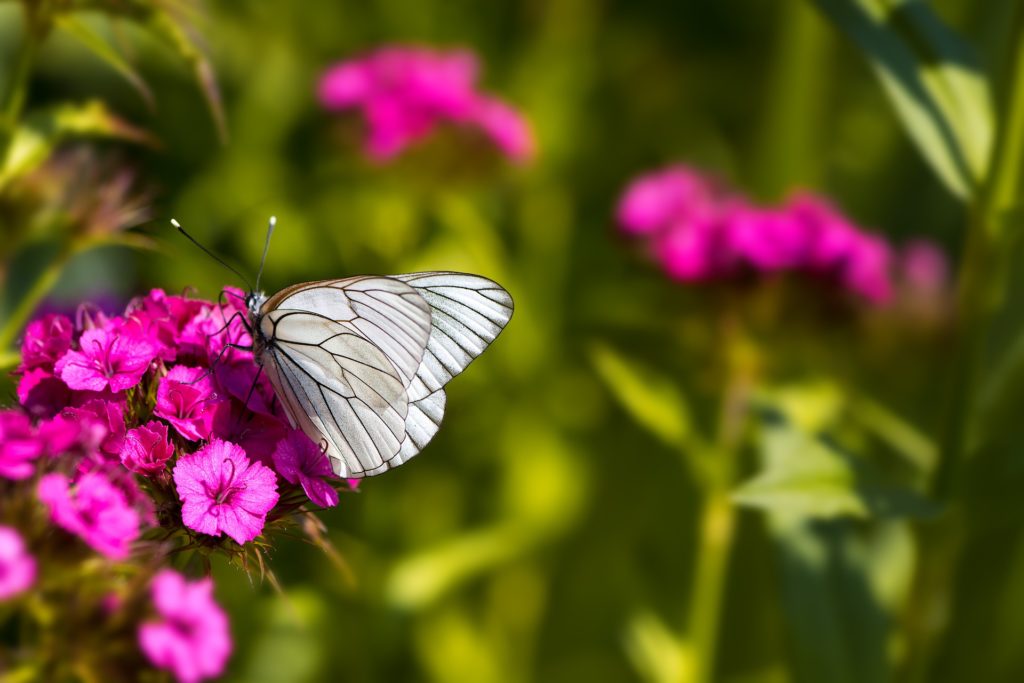
Butterflies are attracted to dianthus due to their vibrant colors, sweet fragrance and nectar content. These factors make the flowers an ideal food source for butterflies, providing them with necessary energy and nutrients. The bright and eye-catching colors of the dianthus flowers make them easily noticeable to butterflies, while their sweet fragrance acts as a natural attractant. Additionally, the nectar content of dianthus flowers is attractive to butterflies because it provides them with a source of energy.
Furthermore, dianthus flowers are known to bloom for an extended period, which makes them an excellent long-term food source for butterflies. As a result, butterflies are more likely to visit gardens that have a variety of dianthus plants.
Notably, dianthus flowers are also relatively easy to grow, which makes them a popular choice for home gardeners who want to attract butterflies. By planting dianthus flowers in their garden, homeowners can ensure that they will have a steady stream of butterfly visitors throughout the season.
In addition, butterfly populations are declining due to a variety of factors, including habitat loss and climate change. By planting dianthus flowers, gardeners can help ensure that their local butterfly populations have access to a reliable source of food and thus contribute to their conservation efforts.
Don’t miss out on the opportunity to attract these beautiful creatures to your garden! Consider planting dianthus flowers to provide them with the necessary energy and nutrients to survive and thrive.
Move over kale, dianthus is the new superfood for butterflies.
Nutritional benefits of dianthus for butterflies
Dianthus Flowers and the Nutritional Benefits for Butterflies
The dianthus flower is known for its attractiveness to butterflies. These pollinators are drawn towards the plants due to its nutritional benefits.
- Dianthus flowers provide nectar as a food source for butterflies.
- The bright colors of dianthus blooms attract butterflies.
- The scent of dianthus petals is appealing to butterflies.
- Dianthus provides a safe haven as well as food sources for butterfly larvae.
- The high protein content in the leaves is essential food for developing caterpillars.
- A low quantity of toxicity in dianthus makes it safe for poisoning-free feeding.
Not only do these benefits make the dianthus plant attractive to butterflies, but they also contribute significantly to nurturing and conserving different species through their lifecycles.
It’s worth noting that planting dianthus in a garden will not only bring beauty and brightness, but it will also aid in preserving the butterfly population.
As summer approaches, ensure that your garden includes this key element to support these stunning winged creatures through their life cycle.
Looks like butterflies have a chemical dependency on dianthus, but who can blame them? We all have that one flower we can’t resist.
Chemicals in dianthus that attract butterflies

Dianthus contains chemicals which have the ability to attract butterflies. These chemicals, which are commonly known as volatile organic compounds, are released by the flowers of the dianthus plant and can be detected by butterflies through their highly sensitive antennae. Once they detect these chemicals, they are drawn to the plant for nectar.
It has been observed that not all dianthus flowers release the same amount or combination of chemicals. This variation in chemical composition can attract different species of butterflies. Additionally, certain colors and patterns on the dianthus flowers also aid in attracting specific butterfly species.
Interestingly, some types of dianthus have evolved to mimic other plants which butterflies prefer for nectar. This ability to mimic other plants increases their chances of being visited by more butterfly species.
A famous story about butterflies and dianthus involves a 19th century botanist named H.W. Bates who discovered a species of butterfly that was attracted exclusively to one specific type of dianthus flower. The butterfly would lay its eggs on this flower and even defend it from other insects trying to feed on it. This is an example of how certain chemicals in dianthus can create special relationships with particular species of butterflies.
Transform your dianthus garden into a butterfly hot spot with these simple tips, because who doesn’t want a garden full of fluttering friends and free entertainment?
How to attract butterflies to your dianthus garden
Paragraph 1: Attracting butterflies to your dianthus garden can be achieved through various means. By incorporating enticing elements into your garden, you can successfully achieve this.
Paragraph 2: Enhance the visual appeal of dianthus flowers with bright colours as butterflies are attracted to bright and vibrant colours. Add nectar-rich plants such as lavender, asters, or marigolds to your garden to provide food and shelter for butterflies. Ensure there are damp patches for the butterflies to rest in your garden. Place rocks in sunny areas for butterflies to sunbathe.
Paragraph 3: You can further enhance your garden by planting a variety of host plants. For instance, adding plants that cater to the life cycles of butterflies helps maintain their population. Be careful when using pesticides and herbicides in the garden as it can harm the butterflies and their habitat.
Paragraph 4: According to researchers at the University of Missouri, butterflies are attracted to dianthus flowers because they have a diverse range of fragrances. These fragrances describe the nectar’s quality, and butterflies use this information to decide whether to feed off flowers or not.
Whether you’re a green thumb or a black thumb, here are some planting tips for dianthus that even the reaper himself can master.
Planting tips for dianthus
Dianthus Planting Strategies
When it comes to planting dianthus, you need to follow a set of strategies to achieve the best results. These will ensure that your garden produces high-quality flowers while keeping the plant healthy.
Six-Step Dianthus Planting Guide:
- Choose a sunny spot – dianthus thrives in full sunlight.
- Loosen the soil with a spade and amend with compost for more nutrients.
- Dig a hole for the plant deep enough to cover all roots and add care pencial.
- Plant each dianthus at least 6-12 inches apart for optimum growth.
- Water heavily after planting, then add plenty of mulch around the base to protect from moisture loss and weeds.
- Deadhead regularly to ensure new growth and remove diseased leaves quickly by trimming them off at their base.
Dianthus Unique Details
Maintain proper airflow for better soil movement and water flow that prevents the appearance of pests in dianthus plants. Additionally, use organic fertilizer instead of chemical fertilizers for good plant health.
Pro Tip!
Keep an eye on your developing plants, especially during hot weather as these plants do not tolerate extreme heat well. Provide adequate shade if necessary.
Planting for butterflies is like setting up a Tinder profile – you need to show off your best features and make it irresistible.
Creating a butterfly-friendly garden

With the right planning and execution, one can attract beautiful butterflies to their garden effortlessly. Having a butterfly-friendly garden is not only visually appealing but also plays a crucial role in maintaining a healthy ecosystem. Here are six ways to make your garden more welcoming for fluttering visitors:
- Plan for milkweed plants, which are essential for monarch butterfly’s lifecycle
- Include various host plants like parsley, dill, and fennel caterpillars for food and shelter
- Cultivate an array of nectar-rich plants with varying bloom times like echinacea and coneflowers
- Add natural rocks or logs as resting spots for the butterflies
- Avoid pesticides and chemical treatments that can kill the butterflies
- Create puddling stations with different materials like sand, gravel, or mud to provide water sources
Beyond planting milkweed and host plants, there are other unique details you can consider to make your garden stand out. Providing windbreaks near your garden creates microclimates that help protect butterflies from harsh winds. Furthermore, planning late-season blooms when most other flowers have finished blooming is ideal as it provides an essential food source when many migrating butterflies are passing through.
Do not hesitate; start creating a butterfly-friendly garden today! Witnessing the enchanting dance of these delicate creatures in your own backyard is an experience unmatched by anything else. Embrace nature’s beauty before it is too late! Who needs a butterfly net when you’ve got a garden full of attractive flowers?
Other flowers that attract butterflies
Paragraph 1 – Flowers that Attract Butterflies
Certain flowering plants have a special and unique attraction to butterflies. Knowing about these flowers can help you design your garden and area to attract butterflies.
Paragraph 2 – Other Blooms Loved by Butterflies
To attract these beautiful species, you can plant flowers such as zinnias, salvia, coneflowers, marigolds, and verbena. These flowers are vibrant and rich in nectar, making them perfect for butterflies to visit.
- Zinnias: From summer through the fall, zinnias bloom vibrant red, yellow, pink, orange, and purple.
- Salvia: Come in shades of blue, violet, red, and pink. Common salvia types include sage, mealycup sage, and woodland sage.
- Coneflowers: Have pink, purple, and white petals and are known to grow in challenging conditions.
- Marigolds: They are a classic favorite with yellow, orange, and red blooms.
- Verbena: Florida native verbena has colorful clusters of flowerheads.
Paragraph 3 – Unique Details on Butterfly-Attracting Plants
If you want to attract monarch and queen butterflies, consider planting milkweed. It is the only plant that monarch butterflies will lay their eggs on. Passionflower is another option as they are pollinator magnets, and their leaves serve as a host plant to butterfly larvae.
Paragraph 4 – A True Fact
According to the National Wildlife Federation, there are over 700 species of butterflies in North America. If dianthus is the butterflies’ version of a five-star hotel, then these alternatives are more like a cozy Airbnb – still good, just not as flashy.
Alternatives to dianthus for butterfly gardening
Butterfly gardening involves planting flowers that attract butterflies. Dianthus is a popular choice for such gardens, but there are other alternatives available. Here are some options to consider:
- Verbena
- Coneflowers
- Zinnias
- Asters
- Milkweed
- Purple coneflower
These flowers provide nectar and pollen-rich food sources for butterflies, attracting them to your garden. In addition, they come in various colors, adding natural beauty to your landscape.
It’s worth mentioning that parsley and fennel also make great additions to butterfly gardens. These plants serve as hosts for butterfly larvae and help support their development into fully grown butterflies.
When creating a butterfly garden, it’s important to choose plants and flowers that attract adult butterflies and those that serve as host plants for their eggs and caterpillars. By providing a diverse range of plants in your garden, you can attract a wide variety of butterfly species.
One day at my local botanical garden, I came across a magnificent sight – dozens of monarch butterflies swarming around a patch of purple coneflowers. It was an impressive display of these creatures’ beauty and vitality, reminding me of the importance of creating spaces for them in our world.
Adding these plants to your butterfly garden will make the dianthus feel like it’s in a bouquet with its BFFs, instead of being that one weird flower that no one wants to hang out with.
Complementary plants for dianthus in a butterfly garden.
Adding variety to a butterfly garden is essential. Dianthus is a great flower that attracts butterflies, but it needs companions. Here are some other flower varieties to make your garden more inviting for these beautiful creatures:
- Butterfly Bush
- Coneflowers
- Liatris
- Milkweed
- Purple Coneflowers
- Zinnias
To create an excellent butterfly garden, you can combine dianthus with butterfly bush, coneflowers, liatris, milkweed, purple coneflowers, and zinnias to attract different types of butterflies with different flowers. The combination of these flowers adds beauty and food diversity for pollinators.
Apart from planting complementary flowers alongside Dianthus in a butterfly garden, you can also offer other resources such as shelter and water sources. Shelter areas such as leafy plants or shrubs provide butterflies with shade and places to hide from predators, while shallow water sources like bird baths keep them hydrated.
Pro Tip: While diversifying your plants in the butterfly garden, ensure you choose varieties native to your area that bloom at different times, thereby providing an extended nectar supply period for butterflies.


